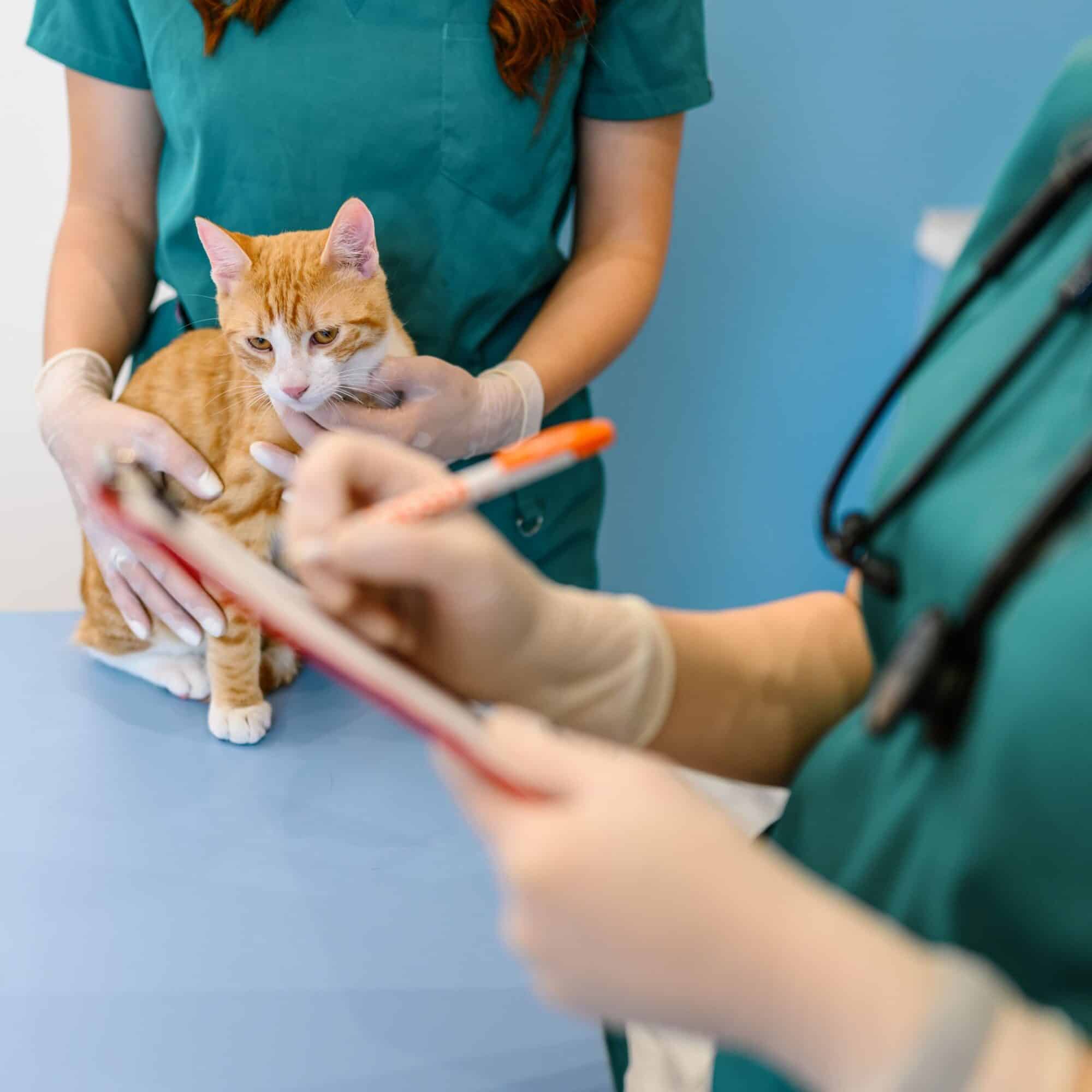Understanding Diabetes Mellitus in Dogs and Cats ![Paw Print Icon]()

Diabetes in pets is a disease that affects more of our patients at At Home Pet Doctor than we would like. Just as this condition is on the rise in humans, diabetes in cats and dogs is becoming more common as well. With approximately one in 500 pets being affected, it is an important one for cat lovers everywhere to be aware of. Do you know the signs of diabetes in dogs and cats?
The Basics of Diabetes
The body needs insulin in order to make use of the carbohydrates ingested, turning them into energy for the cells. When the body cannot produce enough insulin to keep up with carbohydrate ingestion, or when the body’s cells require higher than normal quantities of insulin, diabetes mellitus occurs.
When carbohydrates in the form of glucose cannot be absorbed into the cells, glucose accumulates in the bloodstream. This results in serious consequences.
Pets who are suffering from diabetes often have some characteristic symptoms due to hyperglycemia and the inability of the body to utilize glucose. Signs of diabetes in dogs and cats include:
- Weight loss (even with a good appetite)
- Increased thirst
- Increased urination
- Hunger
- A dull, unkempt haircoat
- Decreased energy levels
- Difficulty using rear limbs (sometimes seen in cats)
- Development of cataracts (dogs)
Left untreated, diabetes can lead to a serious condition called diabetic ketoacidosis (DKA). DKA can result in a very sick animal and can even cause death.
Diagnosing and Managing Diabetes in Pets
If your pet is having symptoms consistent with diabetes, it is important to contact us for an appointment. These common signs of diabetes in dogs or cats can sometimes be consistent with other problems as well, so an accurate diagnosis is important.
Many times veterinarians diagnose diabetes in dogs and cats with blood and urine testing. Sometimes more advanced diagnostics are also necessary.
Managing Diabetes in Dogs and Cats
There is no cure for diabetes in cats and dogs. Most patients, however, respond quite well to treatment.
The management of diabetes in pets is a multi-pronged attack. Successful treatment often involves:
- Dietary changes: A change in diet type or a formal weight loss plan is often part of the successful management of diabetes in dogs and cats. We can work together as a team to determine the best tactic for an individual patient.
- Insulin injections: Most animals do not respond to oral diabetes medications that humans take. There is a newer oral medication for cats that can be used in select situations, but for most diabetic animals, daily insulin injections are part of the treatment plan. Many pet owners are intimidated at the thought of administering injections; however, most pet owners can learn to be comfortable with this treatment.
-
Home monitoring: One of the most important factors in the successful management a diabetic pet is home monitoring. Close attention to eating, drinking, and urination habits as well as changes in behavior can be very helpful. Monitoring blood sugars at home via a glucometer or continuous glucose monitoring system can also provide valuable information about how a diabetic pet is doing.
Routine veterinary care: Since every pet responds differently to the treatment of their diabetes, it is important that we communicate and see your pet regularly.
Diabetic pets may need a little extra care, but there is no reason that they cannot live normal lives with treatment. We are here to help with pet diabetes and any other problem that you might encounter. Don’t hesitate to reach out, when it comes to pets we are glad to be of service.
